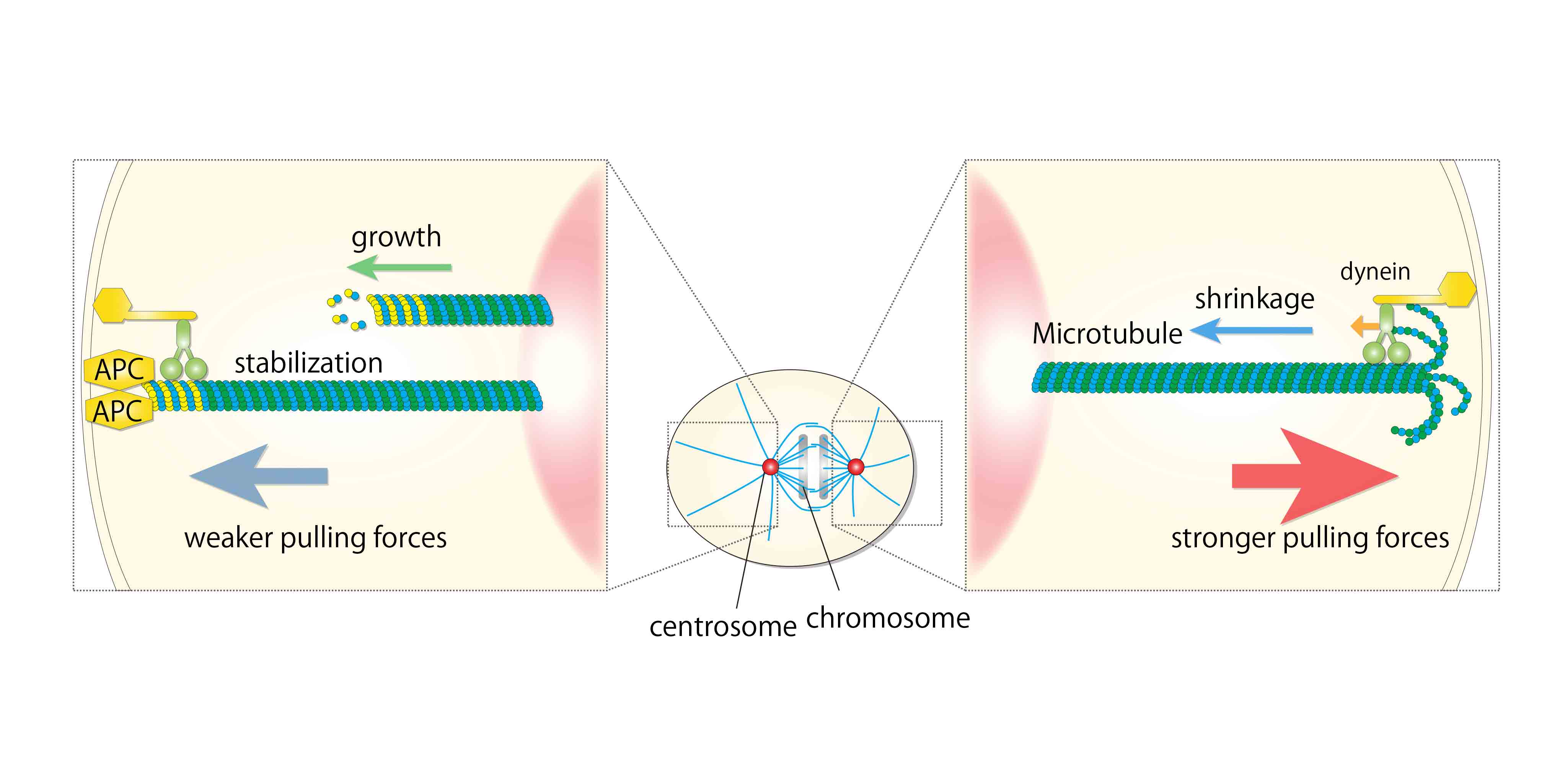Tumor suppressor APC is an attenuator of spindle-pulling forces during C. elegans asymmetric cell division
![]()
Tumor suppressor APC is an attenuator of spindle-pulling forces during C. elegans asymmetric cell division
Kenji Sugioka, Lars-Eric Fielmich, Kota Mizumoto, Bruce Bowerman, Sander van den Heuvel, Akatsuki Kimura, Hitoshi Sawa
PNAS January 18, 2018 DOI:10.1073/pnas.1712052115
Pressrelease (In Japanese only)
It is well known that most colon cancer patients harbor mutations in the APC tumor suppressor gene that causes ectopic activation of Wnt signaling. Although APC regulates microtubules in addition to Wnt signaling, roles of this APC function in cancer has not been explored.
In this study, we have shown that the APC protein on the cell cortex binds to spindle microtubules that are responsible for chromosome segregation to regulate stability of microtubules. This APC binding results in suppression of their pulling forces, thereby regulating chromosome segregation.
Colon cancer cells with APC mutations frequently have aberrant chromosomes that can be caused by abnormalities in spindle pulling forces. Therefore, the function of APC in the pulling force regulation we have shown might be involved in oncogenesis.

Figure: Mechanism of pulling force suppression by APC
Pulling forces are generated by the dynein motor protein, when microtubules that reach to the cell cortex shrink. Binding of APC to the plus end of microtubules inhibits their shrinkage, thereby suppressing pulling forces.
Right
In wild type cell, spindle are strongly pulled from the posterior pole and moved posteriorly. During this, the posterior centrosome oscillates vertically due to the strong forces by microtubules. In contrast, the anterior centrosome is relatively stable due to the suppression of pulling forces by APC.
Left
APC inhibition results in oscillation of anterior as well as posterior centrosomes.















